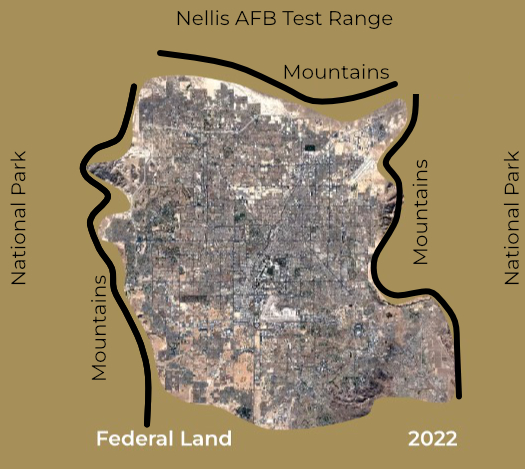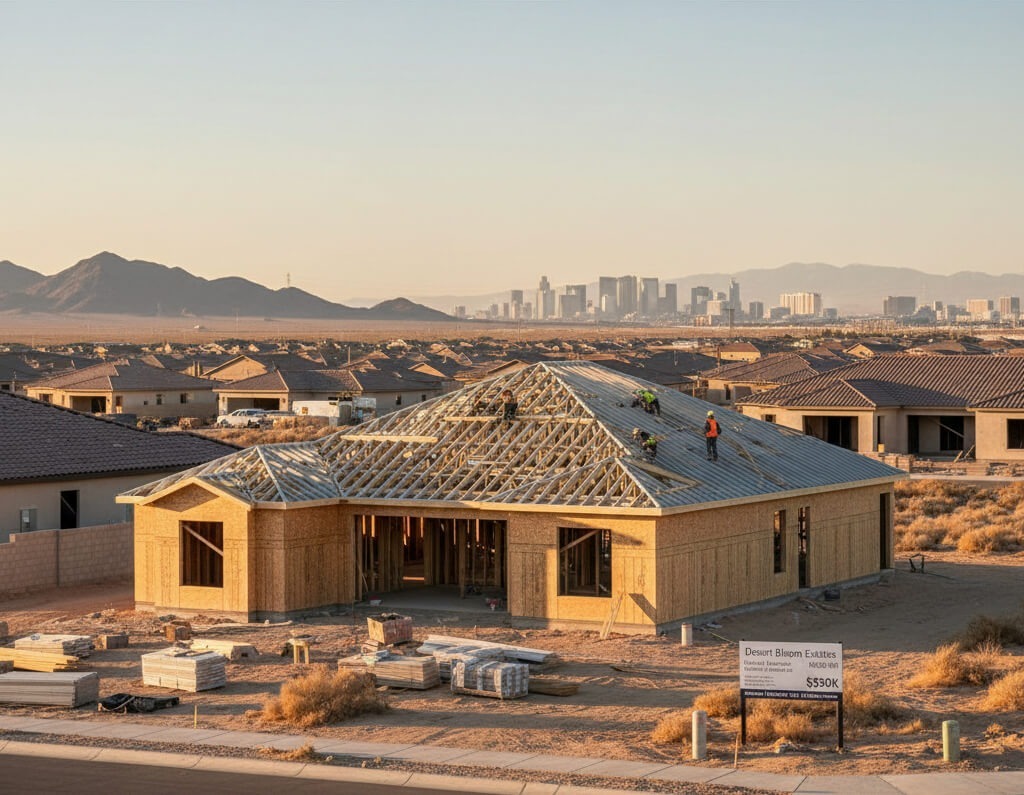
In This Report
- Why Population Growth Alone Is Not Enough
- Potential Investment Properties
- Market Trends
- About the Fernwood Real Estate Investment Group
Why Population Growth Alone Is Not Enough
In my blog last week, I outlined three key factors where you should invest:
- Significant and sustained population growth
- Rapid and sustained appreciation
- An experienced investment team
In today’s post, I will explain why population growth alone isn’t enough when selecting an investment city and why you must combine it with the appreciation of existing homes.
The reason is urban sprawl.
Urban sprawl occurs when cities expand into surrounding rural areas with abundant, low-cost land. This outward growth suppresses the prices and rents of existing properties by creating a continuous supply of new housing inventory (I will explain later). Below are links to Google Earth time lapses showing examples of urban sprawl.
These cities are surrounded by vast vacant low-cost land, enabling virtually unlimited outward expansion. Despite their population growth, existing homes in these cities have shown underwhelming price appreciation and rent growth. This is because unlimited land for expansion allows newer properties to suppress prices and rents of existing properties.
For comparison, Las Vegas presents a different scenario—an annotated 2022 aerial view shows how limited expansion options have driven raw land prices in desirable areas to +$1M per acre. Combined with sustained population growth, this has led to sustained rapid appreciation and rent growth.

Urban Sprawl’s Impact on Existing Home Prices and Rents
Below is an illustration showing a typical metro area with no limit to expansion through urban sprawl.

The meaning of the numbers is as follows:
- Distressed homes, poor schools, and high crime characterize the inner city.
- This is the “new” area where residents relocate for lower crime rates, better schools, and homes with modern layouts and amenities.
- This is the location of your investment property. It is a new home on the leading edge of the urban sprawl. Over the first few years, rents and prices may rise if the demand outpaces the supply (new builds).
- This is raw, undeveloped land.
Over time, as urban sprawl continues, your property loses its “new development” status. Rents and prices start to stagnate as people migrate beyond your location to newer areas.

As more time passes…

Once located in a thriving “new” growth area, your investment property is now an “existing” home, and the “new” location is now further outside the city. Your property now faces stagnant or declining market value and rental income as residents who can afford to migrate to newer developments further out from the city.
Stagnant or declining market value isn’t the only issue. People buying in new areas typically have higher incomes, while those in older areas have lower incomes. Since city governments rely on sales and property taxes, falling incomes and property values in older areas force cities to reduce funding for schools and police. This creates a downward spiral—declining schools and rising crime push more people to move to newer areas, further reducing the average income of those who remain. This financial death spiral is one that few cities have ever recovered from.
If you have any doubts, look at any large metro area—neighborhoods once prime locations have become high-crime, distressed areas.
But the Metro Population Is Growing?
To achieve and maintain financial freedom, you need rental income that outpaces inflation. While this often occurs in areas with strong population growth, the benefits may not extend to existing properties if growth is concentrated in newer developments. These new areas can cannibalize demand from existing properties, forcing investors to continually purchase newer, more expensive properties to maintain higher rents.
Population growth alone isn’t enough to make a city a good investment location. You need proof of rapid, sustained appreciation in existing homes (click here for how to estimate the appreciation and rent growth for a specific zip code). This demonstrates consistent demand for existing homes and improves your chances of steady appreciation and rent growth in your properties.
Conclusion
Urban sprawl, fueled by abundant low-cost land around cities, poses major challenges for investors. Even buying new properties in booming areas isn’t a sound long-term strategy. As residents steadily move to newer developments, your property’s value and rental rates are likely to stagnate or decline.
To maximize your returns, focus only on cities that have both population growth AND limited land for expansion (like Las Vegas).
If you’re interested in exploring how the current Las Vegas market conditions could align with your goals, please use the link below to schedule a time that works best for you.
Potential Investment Properties
Below is a link to this month’s list of candidate investment properties. Our proprietary data mining software selected these candidate properties from thousands of available properties, and this is just the first step in our multi-step validation process, as shown below.

This Month’s List of Candidate Properties
Market Trend
Below are charts from our latest trailing 13-month market report, which includes January data. Remember that this data is only for our target property profile, not the entire metro area. To see all the charts, please click here.
Rentals – Median $/SF by Month
We are surprised to see a slight decrease MoM for January as the properties we listed for rent in January all rented quickly and at higher rents. We will monitor the trend closely to see if it is a data glitch.

Rentals – Median Time to Rent by Month
Median time to rent decreased significantly in January, in line with our expectations.

Rentals – Availability by Month
The number of homes for rent had a significant decrease MoM, in line with our expectations.

Rentals – Months of Supply
About 1.4 months of supply for our target rental property profile. This is quite low for January. This low inventory will continue to pressure up rents.

Sales – Median $/SF by Month
The $/SF had a robust increase MoM. YoY is up 6.6%.

Sales – List to Contract Days by Month
Median days on the market dropped back under 30 days, indicating a strong demand early in the buying season.

Sales – Availability by Month
This chart shows the average daily number of properties for sale in a particular month. There is a slight decrease MoM.

Sales – Months of Supply
There are about 1.4 months of supply for our target property profile. A 6 months supply is considered a balanced market. This limited inventory will likely continue to drive up prices.

About the Fernwood Real Estate Investment Group
We Help Clients Acquire Highly Reliable Passive Income Streams
Here is what our clients have to say about us:
For the last 17+ years, we’ve helped clients build highly reliable, passive income streams through real estate that they will not outlive. Several are now retired and living entirely on their rental income. Most never invested in real estate before they started working with us, and most live in other states or countries. Below is a two-minute video of the services we provide.
Want to know what we can do for you?
© 2005-2024 Cleo Li and Eric Fernwood, all rights reserved.








